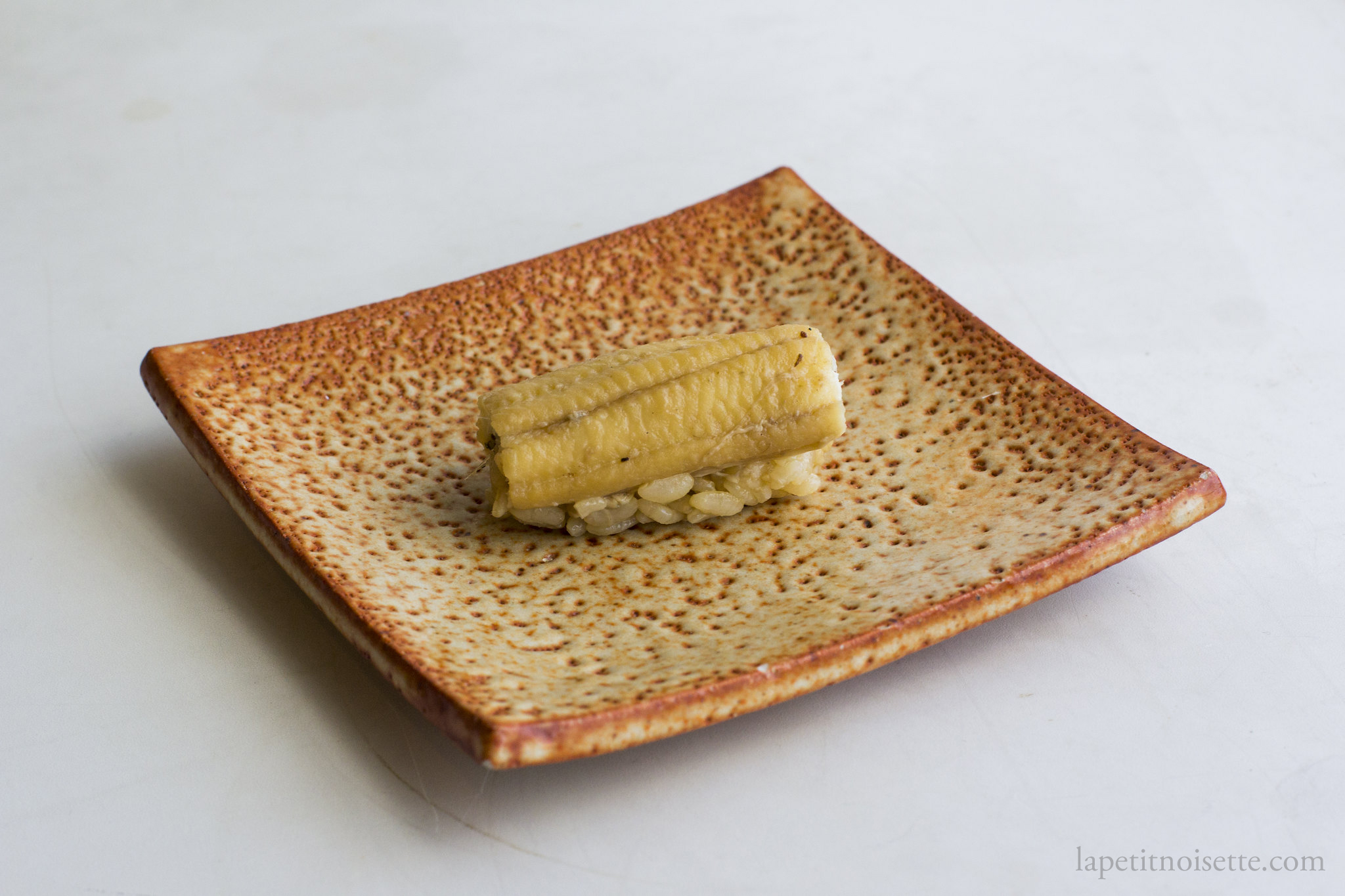
Following on from how to prepare kill and fillet live Anago, we can use the same techniques to make nigiri sushi from Anago.
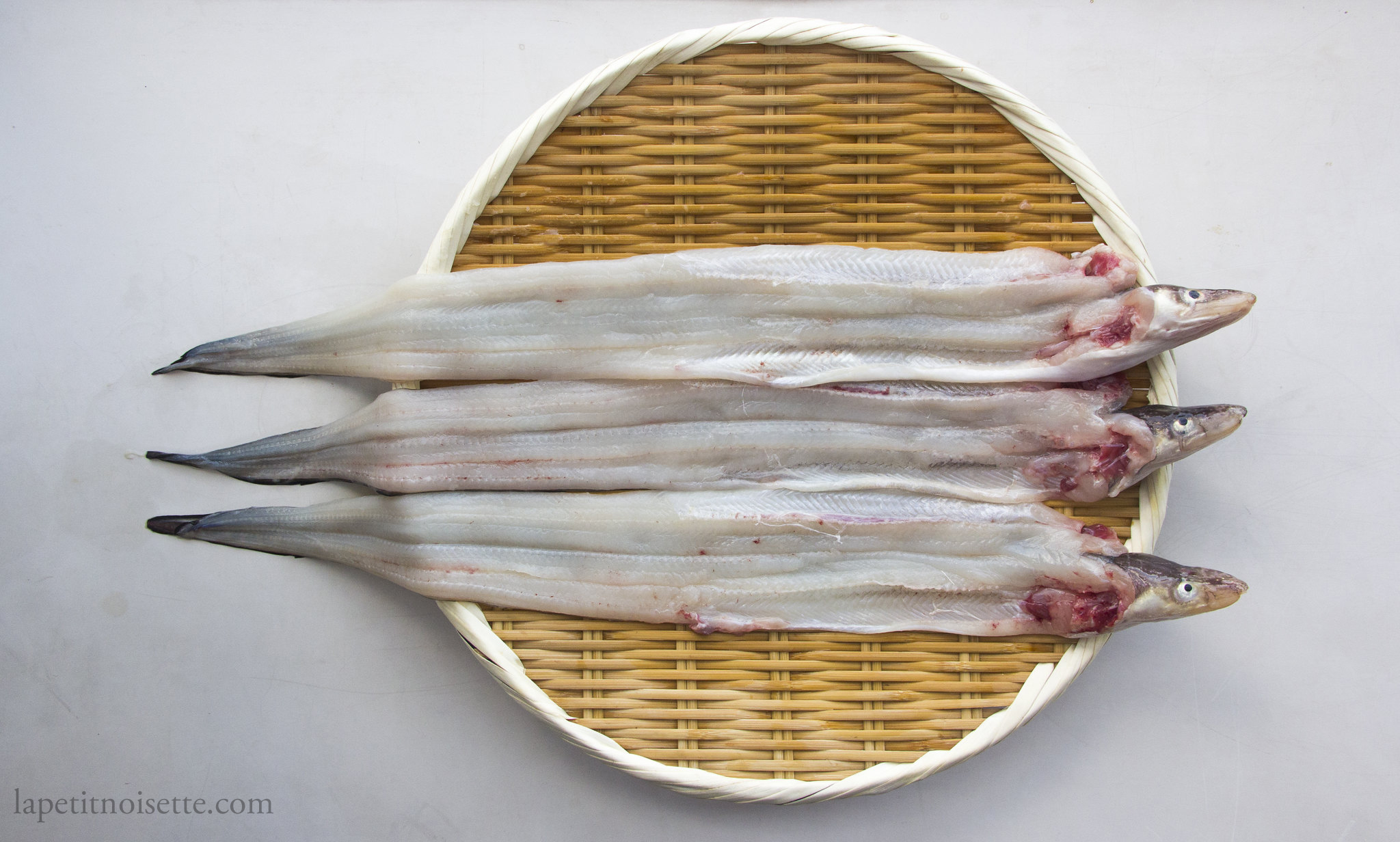
After the Anago eel is killed and quickly filleted, involuntary muscle contraction may still occur especially when the flesh is in contact with salt. When cooked in a large pot of sweet soy sauce mix, the eels may “dance” in the pot due to the boiling liquid and muscle contractions. Therefore, we place a Japanese drop-lid (Otoshibuta/落し蓋) in the pot of sauce, directly in contact with the liquid.
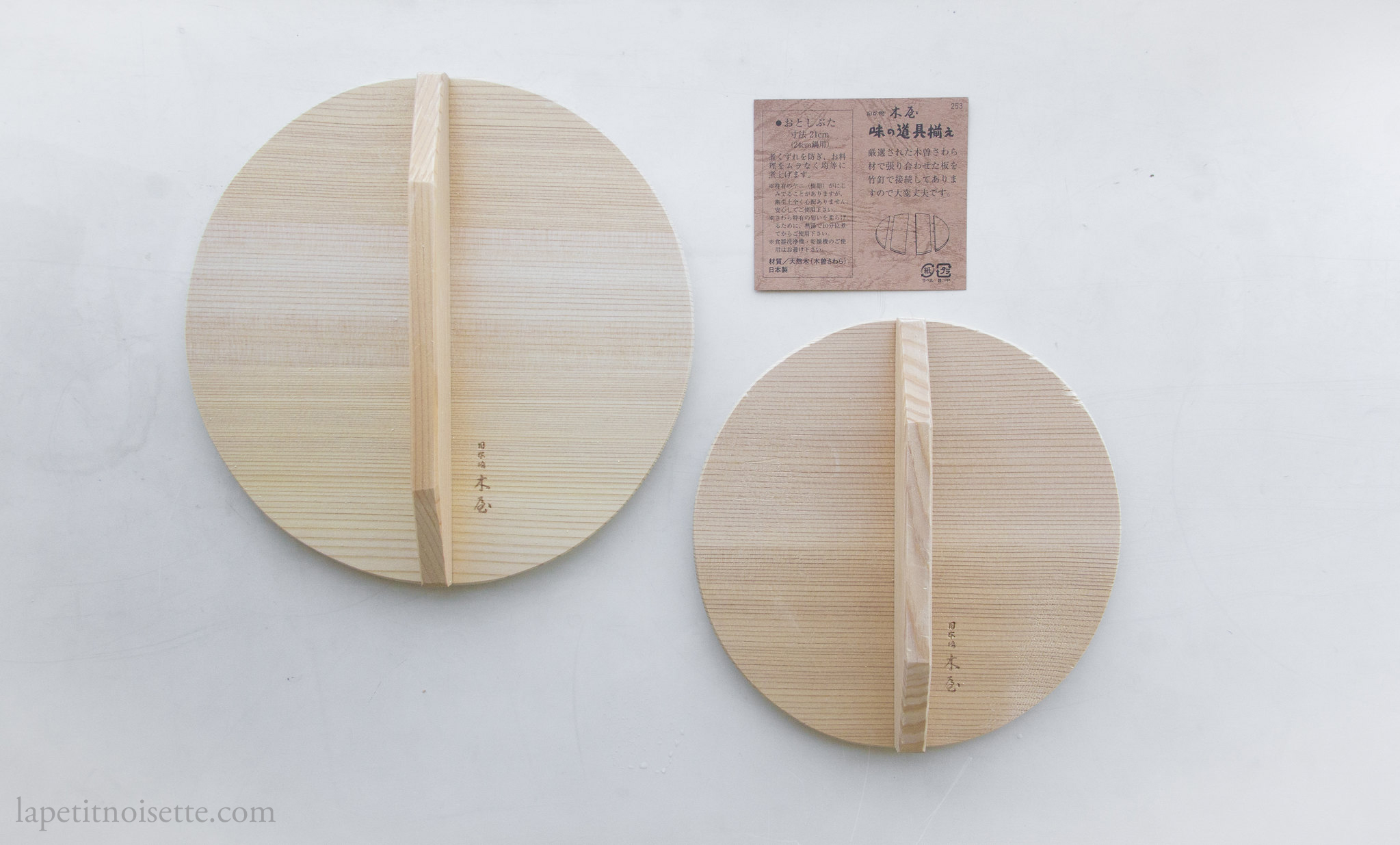
An Otoshibuta, or Japanese drop lid, is commonly used in Japanese cooking but can also be very useful in western cooking. Basically a wooden lid, it is not tight fitting and therefore rests directly on the food instead of covering the pot.
This means that it prevents large bubbles from agitating the food, whilst also reducing evaporation. It also helps keep the heat in the pot, allowing the food to be cooked evenly.
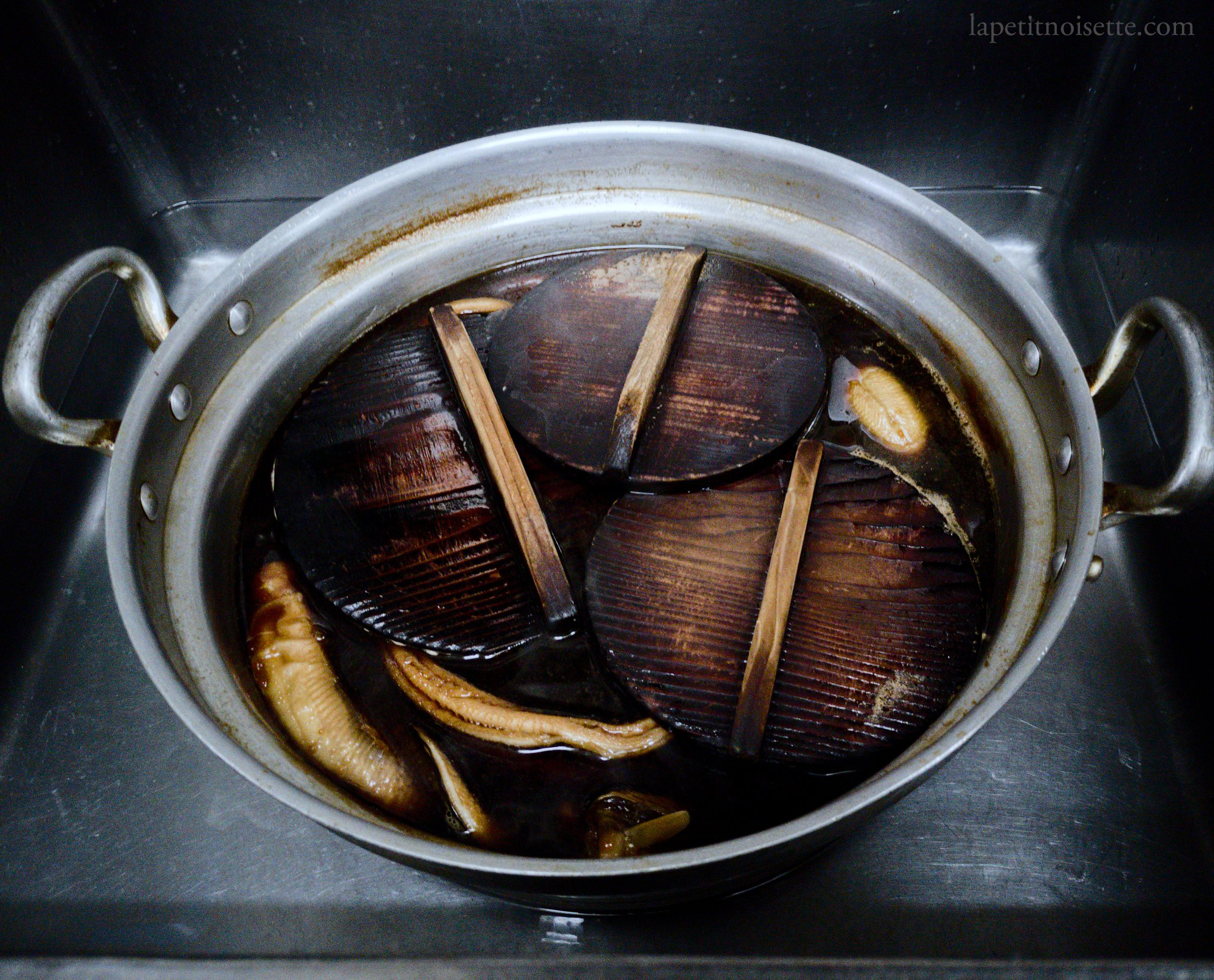
These properties are useful when cooking foods that are either delicate like Anago, or food that needs controlled evaporation like Chashu.
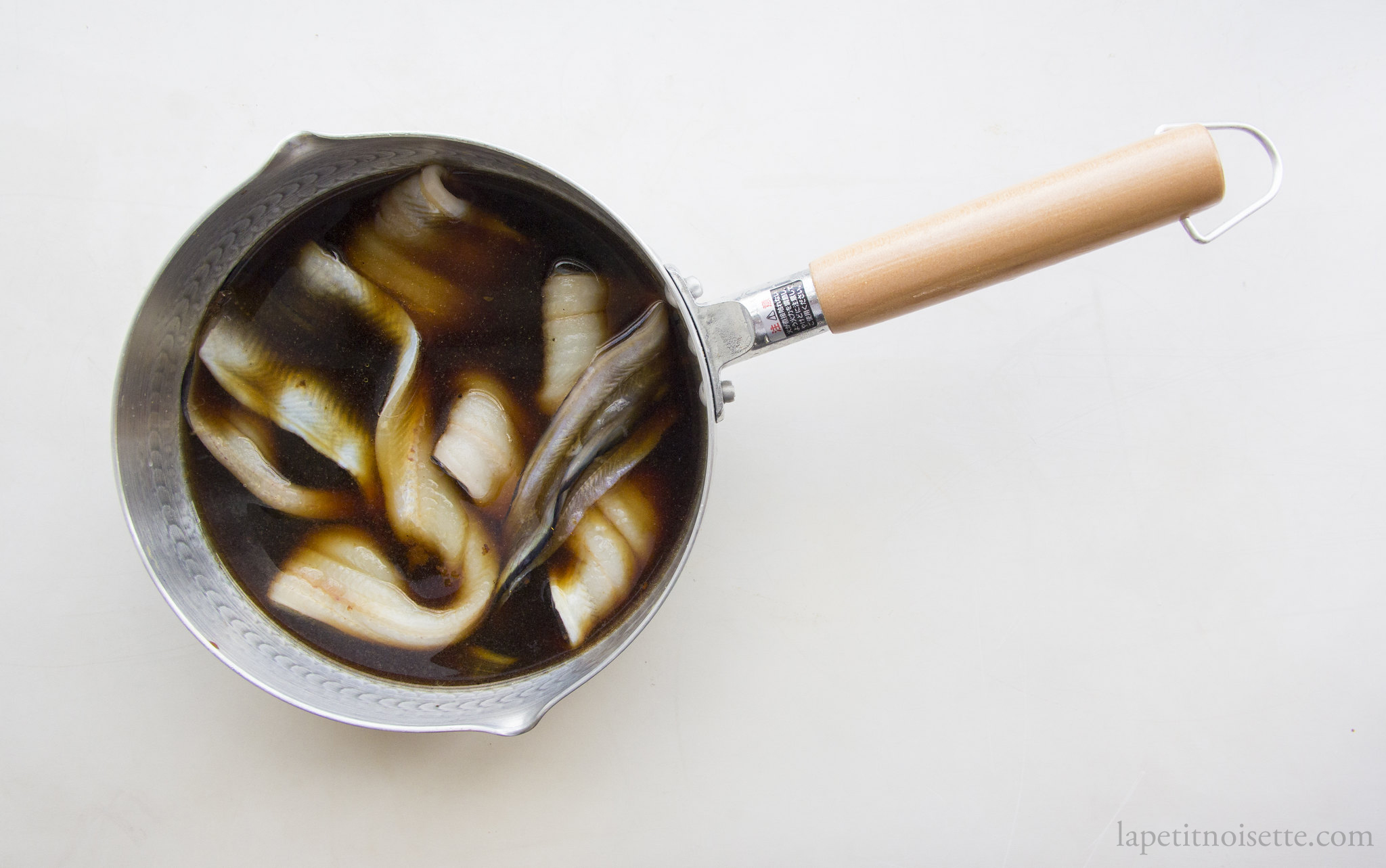
In this scenario, Anago is fully cooked after boiling for 20 minutes. After 20 minutes, the Anago takes on a fluffy texture that is very fragile. It is soft and easy to tear. When removed from the pot it starts the break apart if not handled carefully. This is why when cooking, a drop lid is used to prevent the eels from clashing against one another and breaking. In the restaurant, we use a massive pot and 3 drop lids to cover the pot. This is allow the liquid to evaporate more and thus concentrate the flavour. After cooking, a small portion of the liquid is removed and reduce down to a glaze to coat the Anago nigiri, or made from scratch as in this recipe. The rest of the liquid is frozen and reused the next time eel is cooked.
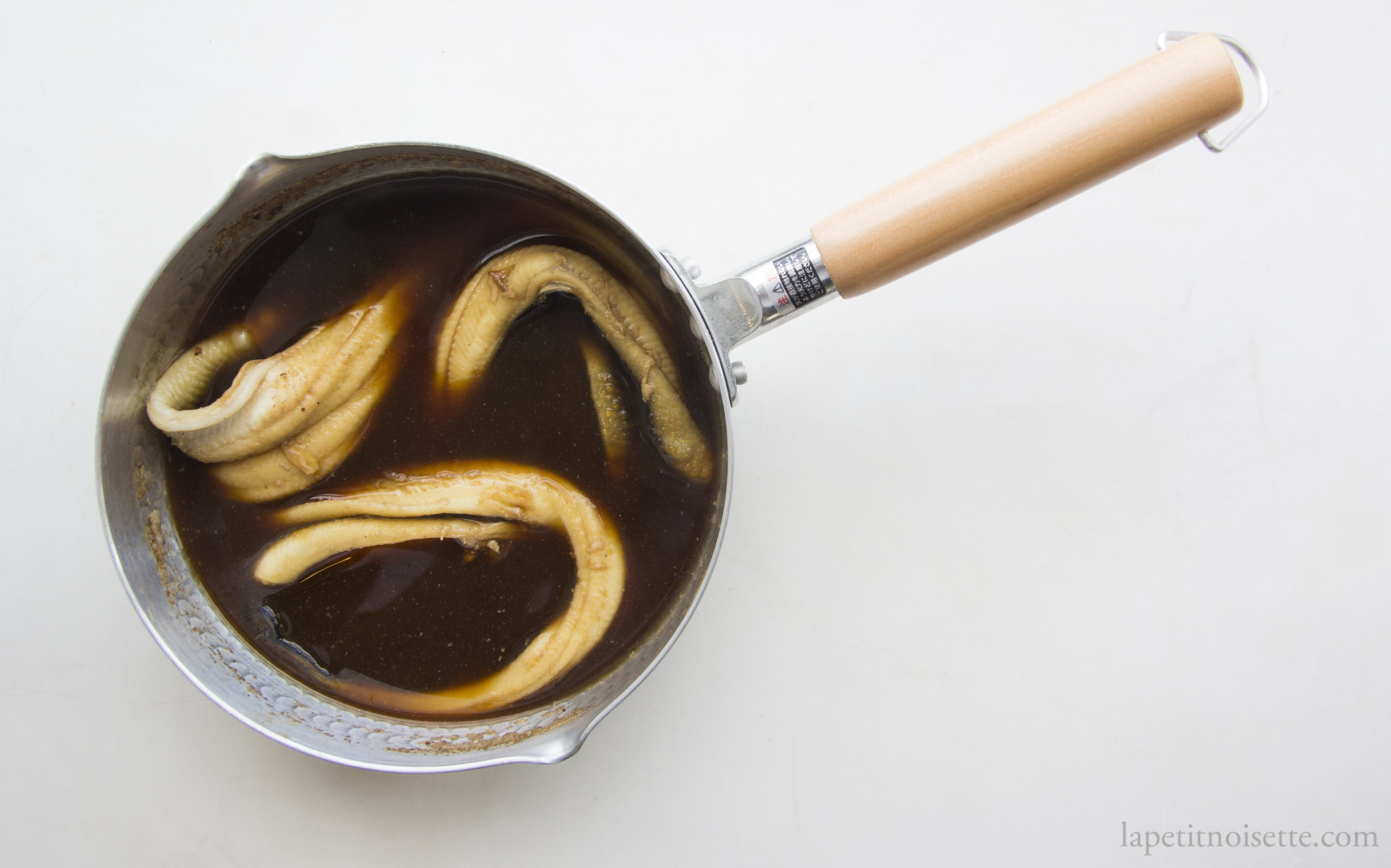
After cooking, the eels are gently lifted out of the pot, laid flat and and allowed to cool.
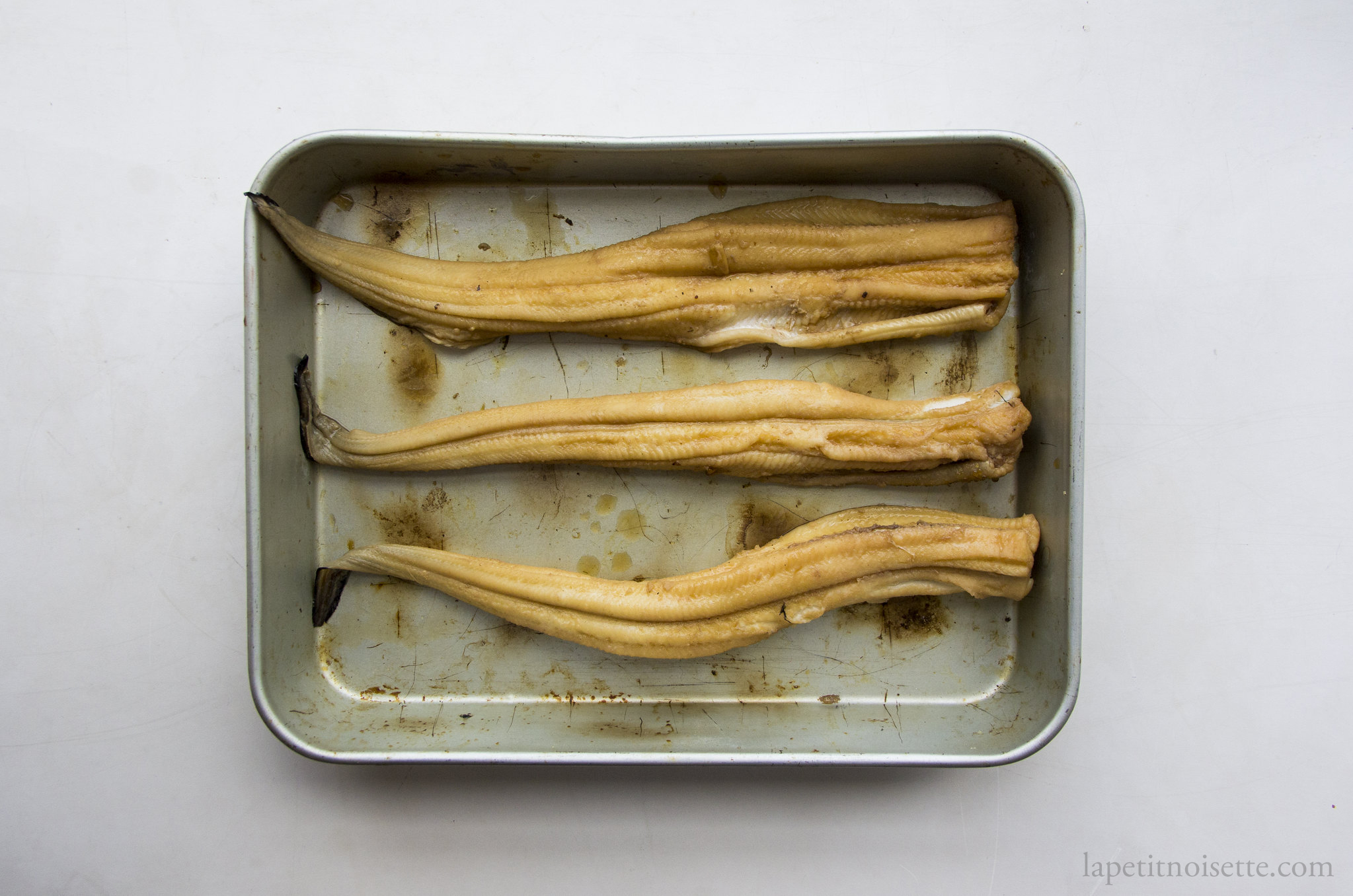
At the sushi restaurant I worked at, anago was the only sushi that was not served directly on the wooden counter but instead on a ceramic tile as shown in the first picture. This was to prevent the sweet anago tare for being absorbed into the wood and damaging the counter.